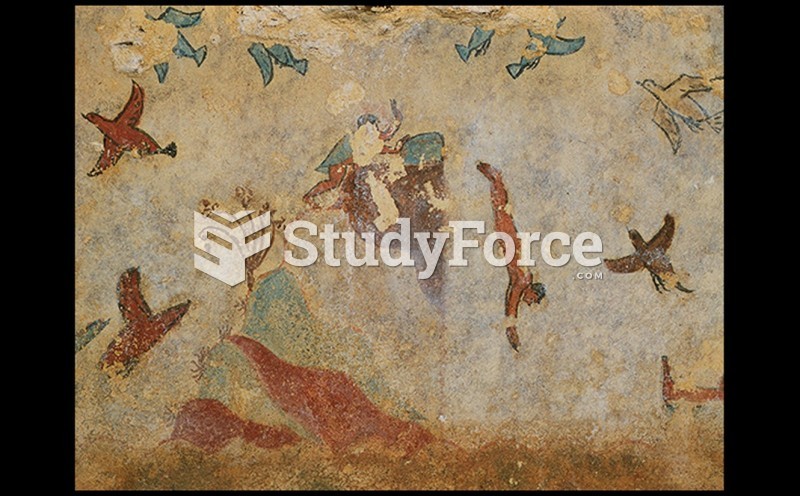Answer to Question 1
B
Answer to Question 2
Roman literature reveals a masterful use of Latin prose for the purposes of entertainment, instruction, and record keeping. Applying knowledge to practical ends, the Romans found prose the ideal vehicle for compiling and transmitting information. Rome gave the West its first geographies and encyclopedias, as well as some of its finest biographies, histories, and manuals of instruction. In the writing of history, in particular, the Romans demonstrated their talent for the collection and analysis of factual evidence.
The Romans were also masters of oratory,the art of public speaking, and in the writing of epistles (letters). Clarity and eloquence, as seen in Cicero's writings, are hallmarks of the style, which Renaissance humanists hailed as the model for literary excellence. In addition to didactic prose, the Romans also produced some of the world's finest verse, such as Virgil's semilegendary epic, the Aeneid. In poetry, we can see the Roman taste for satire, a literary genre that uses humor to denounce human vice and folly. SatireRome's unique contribution to world literatureis a kind of moralizing in which human imperfection is not simply criticized, but rather mocked through biting wit and comic exaggeration.
In the visual arts, sculpture was heavily favored, both for decorative and propaganda purposes; Rome advertised its military achievements in monumental public works of art, consisting mainly of triumphal arches and victory columns. The triumphal arch was the landmark image of Roman imperial victory and monumental sculptures glorified Roman rulers. Sculpture exemplified the Classical synthesis of realistic detail and idealized form that dominated official Roman art, including that found on Rome's mass-produced coins.
In the painting of frescoes and mosaics, Roman artists used pictorial realism to decorate their meeting halls, baths, and country villas. These works would often portray the natural landscape, reflecting Rome's attachment to the world of the senses. Although both the Egyptians and the Greeks used natural settings for human activities, it was the Romans who pioneered landscape as a subject in and of itself. Roman landscapes show a deep affection for the countryside and for the pleasures of nature.



